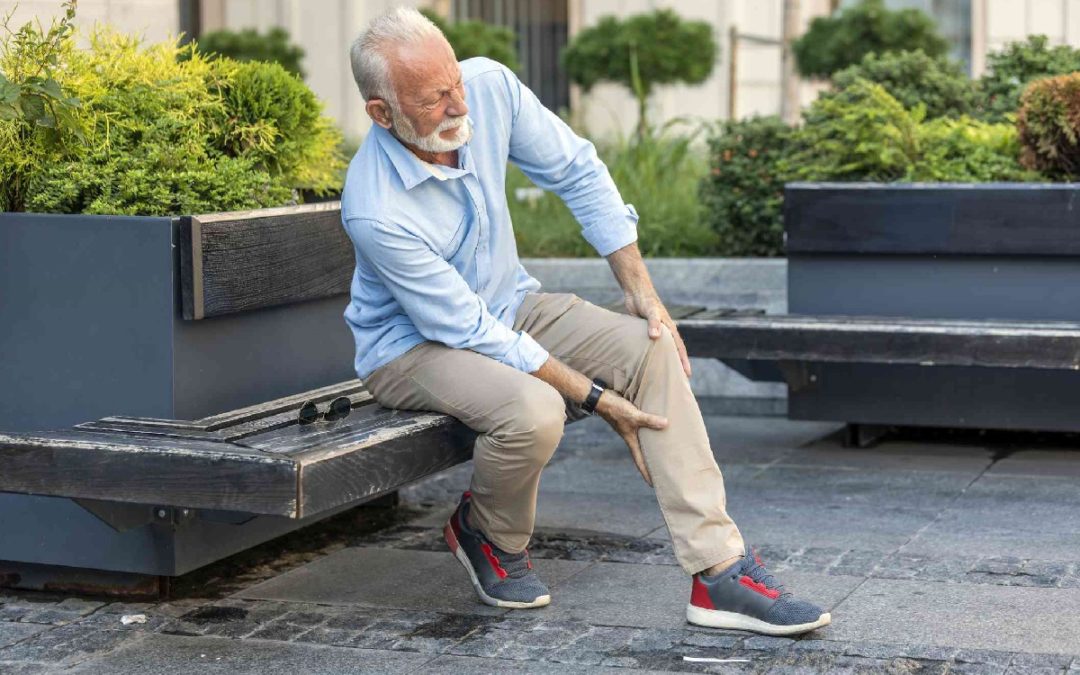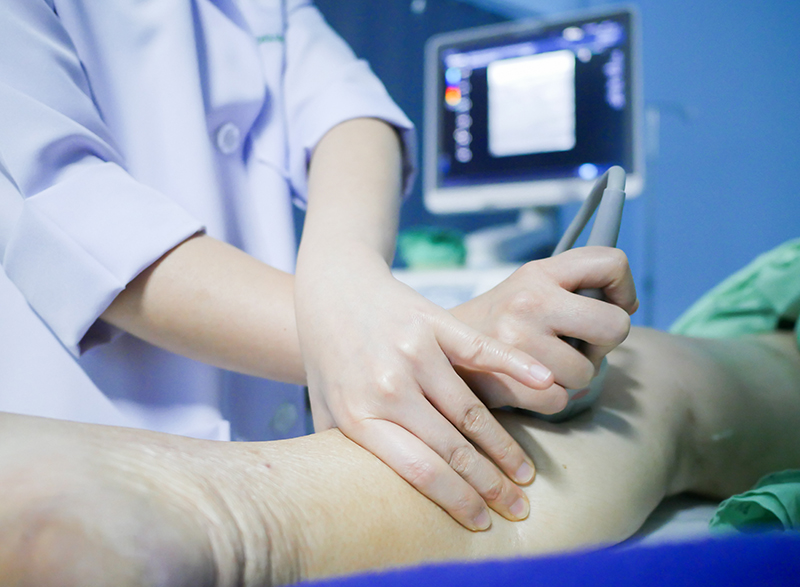Diabetic Leg Pain? It May Be a Sign of Venous Insufficiency
Author: StrideCare Internal Team

Are You a Diabetic with Any of These Symptoms?
- Swelling of the legs or ankles (edema)
- Pain that worsens with prolonged sitting or standing
- Pain that improves with leg elevation
- Pain when walking that relieves with rest
- Cramping
- Throbbing
- Achiness and heaviness
- Itching
- Thickening of the skin
- Skin color changes
- Wounds or sores that don’t heal
- Newly formed varicose veins
- Flaky skin
- Tightness in the calves
Diabetic leg pain can be caused by vascular disease
Diabetes is a disease where the body does not produce or properly use insulin, a regulator of glucose in the blood. So while anyone can be diagnosed with a vascular disease—such as varicose veins, venous insufficiency, deep vein thrombosis, peripheral vascular disease, etc.—individuals with diabetes are at a higher risk because of the way the disease can damage nerves and arteries.
This usually manifests itself in a patient’s legs and arms. Venous insufficiency is a condition that develops over months or years from malfunctioning valves in the veins of the legs. It is characterized by the symptoms mentioned above. The key to remember is that the later that venous insufficiency is detected, the more chronic it is considered and the harder it can be to treat. Left untreated, the damage done to the arteries can lead to much more serious complications such as gangrene and limb amputation.
Therefore, patients with diabetic leg pain should strongly consider getting screened by a vascular specialist.

Top 10 Ways Diabetics Can Reduce Risks of Vascular Disease
Diabetic patients should be on the lookout for any venous irregularities and changes in vein appearance—especially in the legs and feet. Inspect legs and feet regularly and note any changes in appearance.
People with diabetes can also reduce their risk of diabetic leg pain by following these steps:
- Properly manage blood sugar levels at all times.
- Stop smoking.
- Avoid high sodium foods.
- Drink plenty of water.
- Elevate legs while resting.
- Eat high fiber foods.
- Wear loose-fitting clothes.
- Get in the habit of taking supplements and vitamins.
- Stay active. Avoid standing or sitting for long periods of time.
- Get exercise and eat healthier.

Schedule an Appointment with StrideCare
Are you concerned about diabetic leg pain leading to further vascular and vein issues? StrideCare can help.
StrideCare is a leader in performing advanced procedures to treat issues such as varicose veins, spider veins, venous insufficiency, peripheral artery disease, pelvic congestion syndrome, iliac vein compression and more—all while providing compassionate care.
The vascular physicians at StrideCare are board certified diagnostic radiologists with additional fellowship training in vascular and interventional radiology. If you have questions on how to avoid varicose veins and invasive treatment the experts at StrideCare will recommend an individualized plan to help you get the best results.
Prior to starting any new treatment or questions regarding a medical condition, always seek the advice of your doctor or other qualified health provider. This information is not a substitute for professional medical advice.
StrideCare serves the South Texas area including Houston, San Antonio, Austin, Round Rock, Bastrop, Brushy Creek, Cedar Park, Converse, Georgetown, Hutto, Kyle, Leander, Marble Falls, New Braunfels, Pasadena, Pearland, Pflugerville, San Marcos, Schertz, Houston, Sugar Land, Katy, Webster, Bay City, Clear Lake, Lake Jackson, The Woodlands, Universal City, Spring, Kingwood, Stafford, Conroe, Texas City, Cypress, League City, Bellaire, and more.


